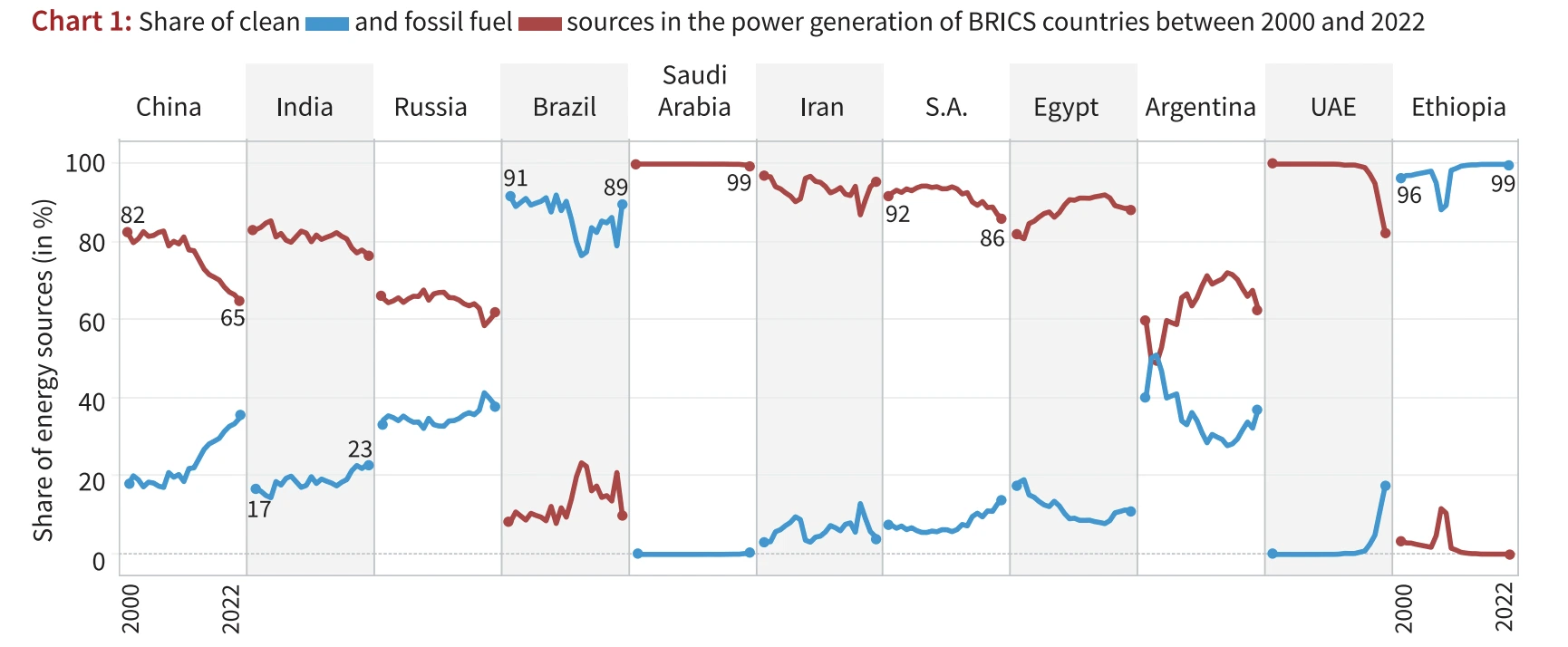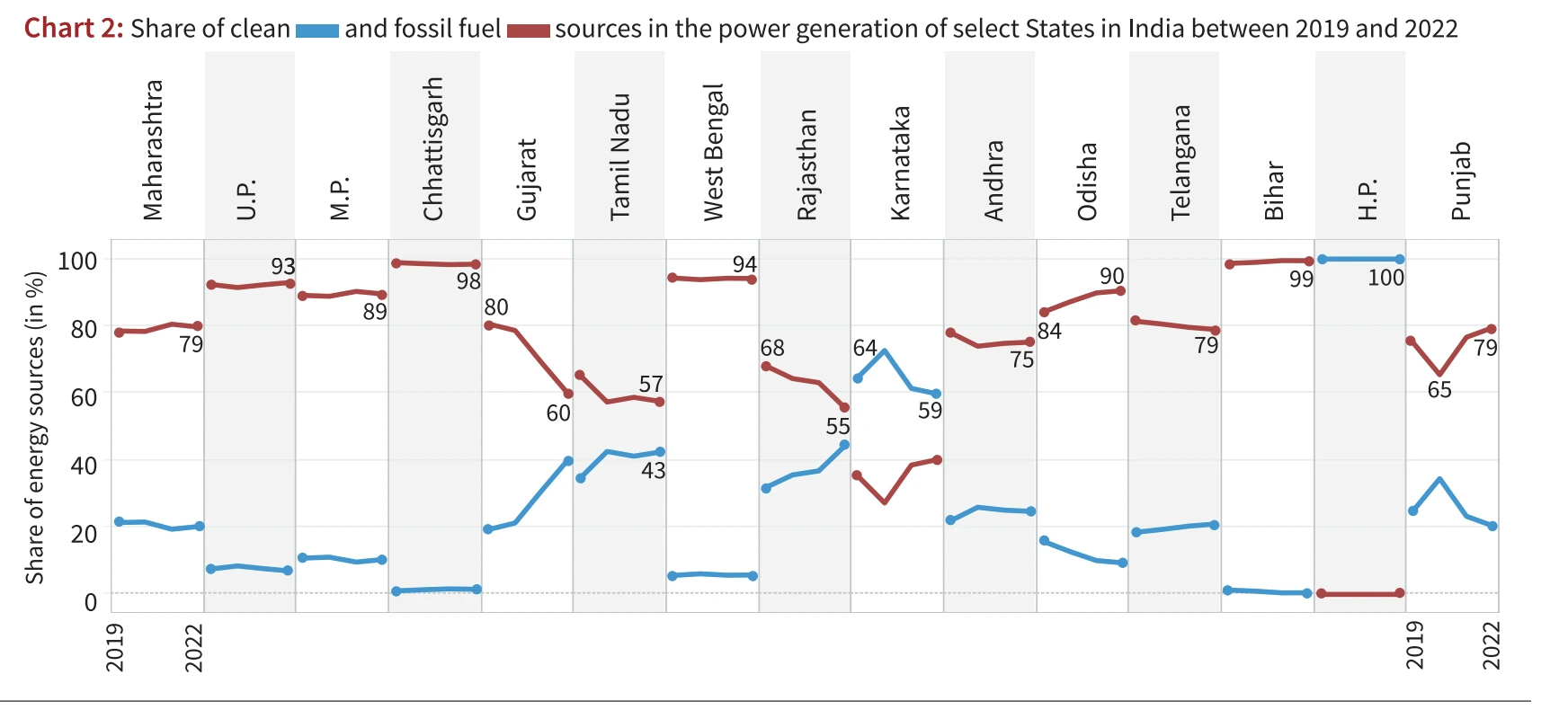Context: Countries around the world are currently navigating their strategies for combatting climate change, with each nation bringing its own set of concerns and interests to the forefront at the U.N. climate summit in Dubai, UAE.
BRICS Unity for Climate: Demanding Finance and Fair Play
- Bloc of Populous Developing Countries: Within this global discourse, Brazil, South Africa, India, and China have formed a cohesive bloc, representing populous and fast-developing nations.
- Request for more climate financing and equity: Together, these countries are making collective appeals for increased climate financing and equity, guided by the “common but differentiated responsibilities” concept outlined in the United Nations Framework Convention on Climate Change (UNFCCC).
- This concept underscores the belief that wealthier nations, having historically contributed more to emissions, bear a greater responsibility in addressing the climate crisis.
BRICS Power Generation Trends (2000-2022)
- China’s Dominance in Energy Production:
-
- Fossil fuel share in China’s power generation reduced significantly from 82% (2000) to 65% (2022).
- China leads globally in both clean and dirty energy.
- Global Impact of China’s Emissions:
-
- China, responsible for about 30% of annual global emissions.
- World’s largest greenhouse gas emitter.
- India’s Gradual Transition:
-
- India’s clean energy share in power production increased from 17% to 23%.
- Saudi Arabia’s Fossil Fuel Dependence:
-
- Over 99% of Saudi Arabia’s power produced by fossil fuels.
- Approximately 67% from gas.
- Brazil’s Leadership in Clean Energy:
-
- Brazil, one of two BRICS nations with a higher share of clean energy than fossil fuels.
- Clean fuel contributes to over 90% of power generation.

Power Generation Trends in Select Indian States (2019-2022)
-
- Drastic decrease in fossil fuel usage for power generation in Gujarat.
- Decline from 80% (2019) to 60% (2022).
- Rajasthan, like Gujarat, records a decline in fossil fuel usage.
- Clean Energy Leadership: Karnataka and Himachal Pradesh:
-
- Karnataka and Himachal Pradesh lead among the top 15 states with a higher share of clean energy than fossil fuels.
- Tamil Nadu’s Stagnation Towards 50:50:
-
- Tamil Nadu was progressing towards a balanced 50:50 clean-fossil fuel mix.
- High Fossil Fuel Dependence in Certain States:
-
- Uttar Pradesh, Madhya Pradesh, Chhattisgarh, West Bengal, and Bihar consistently maintain more than 90% share of fossil fuels in power generation.

Also Read: World Climate Action Summit – COP28
![]() 1 Dec 2023
1 Dec 2023


